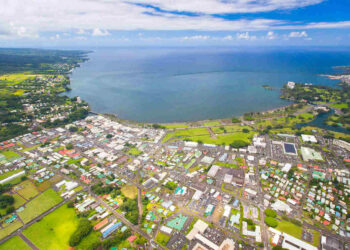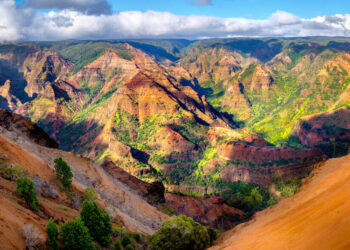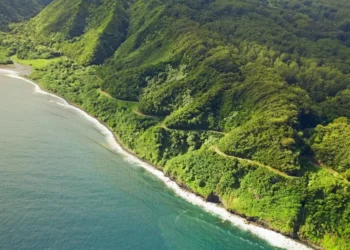Austin rests where the Colorado River threads through rugged, time-worn hills—a city etched from stone and alive with sound. Known widely as the “Live Music Capital of the World,” it carries this name with conviction, blending a deep-seated past with the vigor of today. Its streets ring with music, its open lands hold stories stretching back beyond memory, and its spirit stirs visitors to grasp both its roots and its restless present.
A Striking Note: Each summer dusk, nigh on 1.5 million Mexican free-tailed bats spill from beneath the Ann and Roy Butler Hike-and-Bike Trail bridge, a wild rush darkening the sky. One of the grandest urban bat gatherings anywhere, it ties Austin’s raw edges to its beating heart.
Places to Visit: An Overview
Austin unfolds as a patchwork of places, each with its own tale. The Texas State Capitol, raised in 1888 from pink granite dug nearby, stands taller than its kin in distant capitals. Step inside, and free guides lead you through broad halls—ceilings arch high, a lone star gleams above, and walls murmur of a land that holds firm. Not far off, the Bob Bullock Texas State History Museum lays out Texas’ long road: flint shards from forgotten hands, the dust of cattle trails, the clank of oil rigs rising.
Zilker Metropolitan Park stretches over 350 acres, with Barton Springs Pool at its core—cold water seeps up from below, steady at 68°F year-round, pecans standing guard older than any tale told here. Mount Bonnell calls for a climb; its limestone steps lift you to a perch where Lake Austin shines and hills roll out, a sight fixed since the first settlers staked claim.
Sixth Street hums with sound—venues like The Parish and Stubb’s churn out tunes under lantern glow. South Congress Avenue shifts the pace—shops worn by time, walls dashed with color, the Continental Club a quiet anchor amid the drift.
How to Reach
Austin opens its gates wide. Austin-Bergstrom International Airport (AUS) sits five miles from the city’s pulse, linking to far-flung corners. You’ll find cabs lined up, rideshares at hand, or the Capital Metro Airport Bus (Route 20) to whisk you downtown swift and sure.
The Amtrak Texas Eagle rolls into a modest stop near the center, its iron path stretching from Chicago’s sprawl to the western coast over wide, sun-bleached plains. Greyhound and Megabus pull in by the University of Texas, a short stride from the city’s thrum. For those driving, Interstate 35 cuts a bold line through—watch for snarls; early morn or late day keeps the wheels turning.
Once here, getting about is no trouble. Capital Metro runs buses and a Red Line rail through the main veins, with bikes and scooters scattered for quick dashes. Downtown packs tight—best seen on foot, where old stones and fresh notes meet under your tread.
Frequently Asked Questions About Austin’s Music Scene
Austin’s music runs deep, a thread through its bones, and travelers often wonder:
What makes it the music capital?
Live sound pours from every corner—over 250 venues, from Sixth Street’s roar to Rainey’s porch strums. It’s bred legends like Stevie Ray Vaughan and keeps new voices rising.
Where’s the best spot to hear it?
Sixth Street’s the loud heart—Stubb’s or The Parish pack a punch. Rainey Street’s got a softer pull, bars in old houses humming late. Antone’s Nightclub holds the blues, raw and true.
Any big music events?
South by Southwest in March floods the town—stages everywhere, names big and small. Austin City Limits in October turns Zilker to a soundscape, two weekends of grit and shine.
What’s the sound like?
All kinds—blues cuts deep, country twangs old, rock rattles, and indie bends new. Ain’t no single note; it’s a mess of strings and soul.
When’s it alive?
Every night’s got something—weekends thump hardest, but even a Tuesday’ll sing. Festivals spike it fierce; spring and fall catch the peak.
Beyond the Surface
History’s Marks
The Blanton Museum of Art, tucked by the University, spans old masters’ strokes to stark new lines. The LBJ Presidential Library cracks open a man’s years—laws carved hard, war’s long shadow, his desk left like he just stepped out.
Open Ground
Past Zilker, Lady Bird Lake sits calm under cypress, cut by paddlers’ slow pulls. Barton Creek Greenbelt rambles seven miles—rock shelves, wet hollows, a hush against the city’s grind. Summer’s bat flight off Congress Avenue pulls eyes from bank or boat.
Night’s Stir
Rainey Street flips houses to music dens, drinks and chords spilling out. Hole in the Wall, rough by the school, keeps old echoes alive—Vaughan’s ghost in the wood.
Side Tracks
Cathedral of Junk—a heap of scrap turned strange, call ahead to poke through. Hope Outdoor Gallery—walls for paint, colors that don’t stay long.
Further Out
University of Texas looms big—its Tower lets you climb for a wide look. McKinney Falls State Park, south a ways, trails past rock and a creek that jumps after rain. Texas Hill Country, an hour off, rolls with vine rows and quiet towns—Fredericksburg’s got old German bones and wine to sip. BookPeople stacks books and talk downtown; the Texas Book Festival hauls in writers yearly, piling words high.
Practical Notes
Where to Rest
Driskill Hotel, up since 1886, holds court with arches and a bar thick with years. Firehouse Hostel, cut from an old watchpost, keeps it lean. Hotel San José by Zilker—simple, pool in the shade.
Eats to Find
Odd Duck—duck fries, goat stewed slow. Torchy’s Tacos—avocado crisped up. Gus’s Fried Chicken—hot, southern snap.
When to Go
Spring and fall dodge the blaze and rare chill. South by Southwest, March—lock it down early. Bats swarm June to August.
Parting View
Austin straddles where old ruts meet new dust—stone and sound in a rough weave. Hands you a tune, a bite, a track—says walk it. Capitol’s got weight, Greenbelt’s still, past tough and soft, now steady and kicking. Bats climb, strings wail, and what’s ahead stays real—a Texas mark every step scratches fresh.











